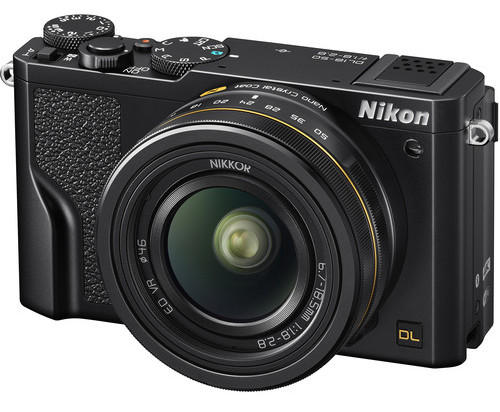The popularity of premium 1-inch sensor compact cameras exploded with the arrival of Sony’s RX100 series, and since then, the segment has gone from strength to strength.
Joining the four RX100 models, Canon GX series and Panasonic Lumix TZ/TS/FZ series, we now have three new models from Nikon: the DL 18-50mm f/1.8-2.8, DL 24-85mm f/1.8-2.8 and DL 24-500mm f/2.8-5.6 (35mm equivalent).
The inner workings of all three cameras are essentially the same, from the sensor and processor to the autofocus system and video recording capabilities. Below you can find a list of the key features they share:
- 3-inch OLED touch screen (articulating on 24-500mm, tilting on 18-50mm and 24-85mm)
- manual focus ring and fluorine coatings on lenses
- the same 1-inch 20.8MP BSI CMOS sensor found inside the latest Nikon 1 models
- new EXPEED 6A image processor
- highest ISO value of 12800
- Hybrid AF system with 105 phase-detect / 171 contrast-detect points
- 20fps burst shooting with continuous AF or 60fps in single AF
- reduced shake thanks to the Dual Detect VR
- 4K recording at 30p and slow motion options at low resolution
- Wi-Fi, NFC, and Nikon’s ‘SnapBridge’ technology (uses Bluetooth to maintain connection between camera and smartphone)
The primary difference between the three cameras is the focal range.
The 18-50mm f/1.8-2.8 is certainly the most exciting option of the three because it has the widest lens of any premium compact on the market. It is the only model to lack a built-in flash but like the other two cameras, it has a hot shoe to which you can attach an external flash or an optional DF-E1 tilting electronic viewfinder. It also has the advantage of an ND filter and Nano Crystal Coating on the lens.

The 24-85mm f/1.8-2.8 has a more standard focal range. It lacks the ND filter and Nano Crystal Coating of its sibling but it can take 1:1 macro photographs with a minimum focus distance of 3cm. Unlike the 18-50mm, the hotshoe is found in the middle rather than on the left. Otherwise the two cameras are identical.

The 24-500mm f/2.8-5.6 has the most versatile focal range of the three models but its aperture range isn’t as bright. There are also some noticeable physical differences including a chunkier grip, a fully articulating screen and the inclusion of a built-in OLED viewfinder. Unlike the other models, it has a mic input jack with support for Nikon’s ME-1 shotgun mic.

All three models will be available in June at $849 for the 18-50mm, $649 for the 24-85mm and $999 for the 24-500mm. The 18-50mm and 24-85mm will also be available as a kit with the external DF-E1 EVF.
